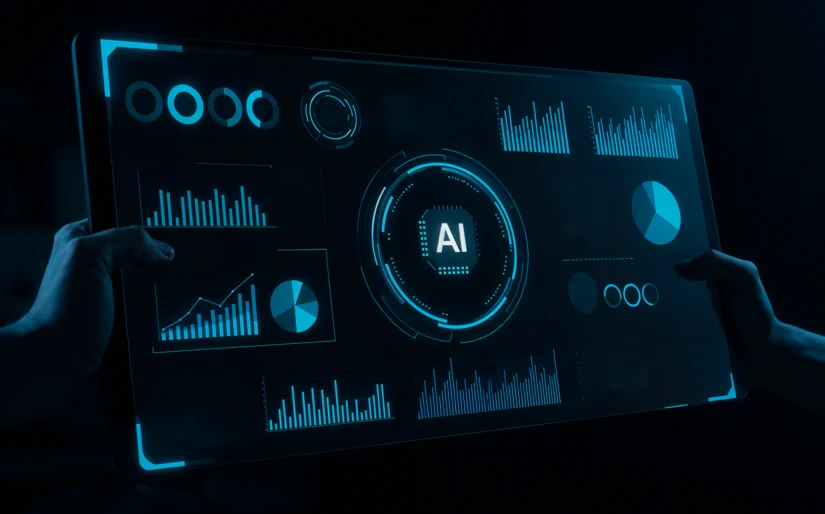The concept of research, any research, has always been a race against time. And in the era where we have access to huge amounts of data, the race just heated up…
Artificial intelligence has certainly become indispensable in this regard, but the matter isn’t just about automating tasks and gathering information anymore. Now, AI tools have evolved into complex instruments, changing the way we gather, analyse, and interpret information and data. And the next big thing in AI that’s poised to transform the landscape is Deep Research.
Deep research is the capability of AI chatbots, such as ChatGPT, to interpret complex search queries, break them down into numerous, discrete research tasks, research them all independently on the web, and consolidate the results acquired in a structured manner. It’s AI moving beyond simply answering questions to delivering meaningful insights like never before, making it a game changer in today’s tech-driven world.

By the time you’ll have read this article, you’ll know that there is more than one Deep Research model in the market today. Google did it first, introducing Gemini Pro 1.5 in December 2024. OpenAI made it more well-known, integrating its Deep Research tool into ChatGPT in early February 2025.
Soon enough, Perplexity and other companies followed with their own AI models like Perplexity AI, Kompas AI, and Elicit. Here’s a deep dive into all that Deep Research is, and how it’s reshaping how we are and will be using AI in the future.

Deep Research Models – An Overview
- OpenAI’s ChatGPT Deep Research: OpenAI’s advanced AI agent-like ChatGPT Deep Research indulges in multi-step, in-depth research. It runs on the specialised “o3 model” and can scan hundreds of sources, including PDFs, images, and text. It then generates detailed, cited reports in only 5–30 minutes, making it far, far quicker than manual research. Even now, OpenAI continues to make improvements, including better file handling and adding embedded images with citations.
- Google’s Gemini Deep Research: Launched in December 2024, Gemini is designed to simplify the complex tasks related to deep research. It automates the complete process by searching the internet, analysing data quickly, and generating structured reports, all with direct source links and that too in about 5 minutes. While it begins pulling static results, it changes track when it uncovers new insights, refining its queries. Moreover, it could also help discover valuable, oft-overlooked resources that standard searches could otherwise miss.
- Perplexity’s Deep Research: Launched a week after ChatGPT Deep Research, Perplexity’s version takes answering questions to the next level. It directs multiple searches, analyses tons of sources, and applies advanced reasoning, delivering detailed, expert-level insights in a matter of minutes. Researching a topic that otherwise requires hours of manual research is made easy with this tool, which takes an adaptive and smart approach.

Why Is Deep Research Important?
What sets Deep Research models apart is their potential to redefine the way we work by handling multiple, extremely complex research tasks with accuracy and speed. Their ability to analyse huge amounts of data within minutes to deliver structured insights not only saves time across industries but also helps them make smarter decisions. It helps identify hidden patterns to generate precise observations, helping enterprises anticipate trends and optimise their operations. What makes them so versatile is their ability to work beyond just what large enterprises need, making expert-level research accessible to even small organisations, individuals, and students, ensuring they make informed choices even if they don’t possess specialised expertise.
In principle, Deep Research is extremely useful where numerous sources are involved in the search for information and the results require being arranged in a structured format. They can greatly accelerate scientific research, as researchers can employ these models to study huge amounts of data, scan hundreds of documents, identify potential treatments, and explore new breakthroughs. In the financial sector, they can be employed to craft in-depth reviews of financial and investment reports, market data, and news trends to help analysts and investors identify risks as well as lucrative opportunities.
In the field of marketing, Deep Research can be immensely useful in delivering insights about product development, helping review competitive data, market trends, and customer feedback to help with strategic planning and product innovation. Automated legal research, analysing global policies and issues – Deep Research can help with them all.

To Sum Up
One might ask what makes Deep Research different from AI chatbots. Unlike basic AI chatbots, Deep Research is not just for quick answers, but for those seeking tools with depth and accuracy. Whether you’re a professional or an individual conducting research in sectors like engineering, science, finance, and more, Deep Research refines results and delivers insights, even asking users for clarification during the process. 2025 and 2026 might very well be the years for deep research, which is quickly climbing the popularity charts by redefining the depth and speed of information discovery.
In case you missed:
- Will AI Be the End of Web Searches?
- AI + Web3: Making A Smarter Internet
- AI And The Supply Chain: Reshaping The Logistical Network
- Millennials And Gen Z Are Using AI For Investment. How Prudent Is It?
- Should Children Be Talking To AI Chatbots?
- Can We Really Opt Out of Artificial Intelligence Online?
- Chatting with ChatGPT? Be Warned – It Could Be A Downward Spiral
- Agentic AI and its Future in the Fintech Revolution
- Can AI Modernise Legacy Systems?
- From Ranking to Relevance: The Rise Of Generative Engine Optimisation










